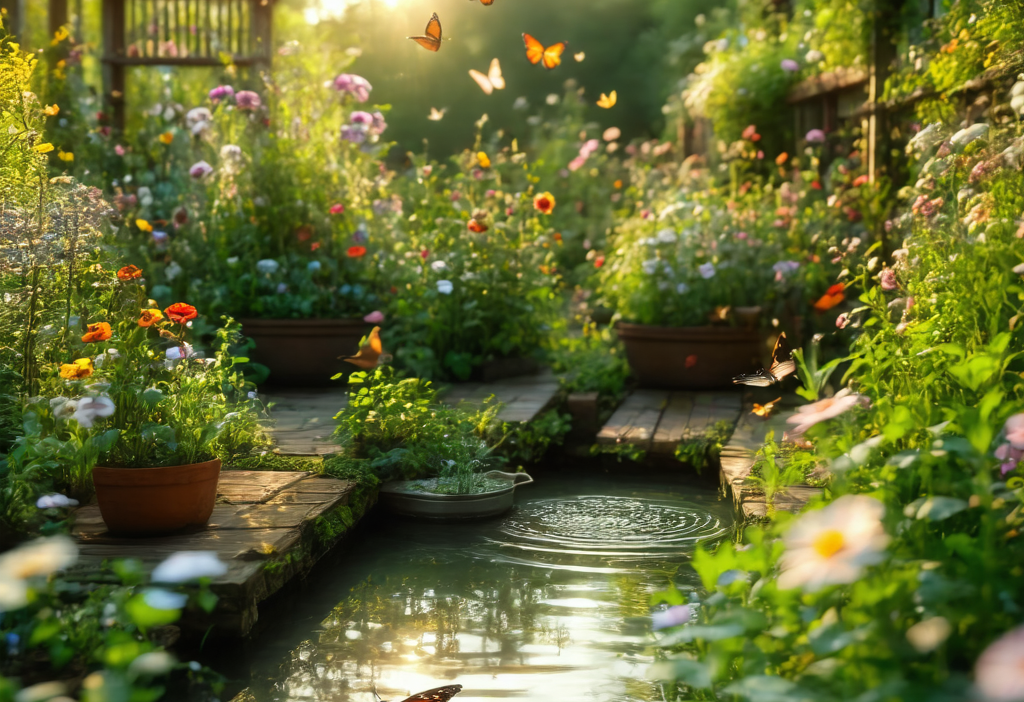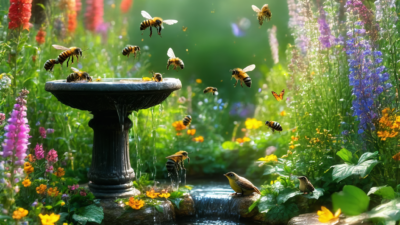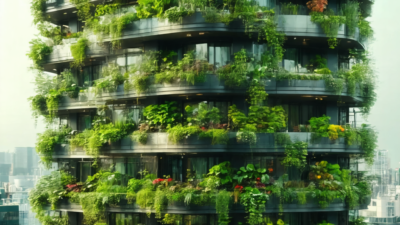Creating a Self-Sustaining Garden
Gardening is more than just planting seeds; it’s about creating a harmonious ecosystem that sustains itself over time. A self-sustaining garden requires careful planning, the right plants, and sustainable practices. Whether you’re a seasoned gardener or a novice, this guide will help you create a thriving outdoor space that benefits both you and the environment.
Understanding the Basics
To build a self-sustaining garden, start by assessing your space. Consider factors like sunlight, soil quality, water availability, and local climate. These elements will guide your plant selection and garden design. Native plants are often the best choice since they’re naturally adapted to your region and require less maintenance.
- Conduct a soil test to determine its pH level and nutrient content.
- Identify areas with full sun, partial shade, or full shade.
- Plan for water conservation by incorporating rainwater harvesting systems.
Remember, the key to a self-sustaining garden is balance. Too many plants in one area can lead to overcrowding and competition for resources. Space your plants appropriately and consider companion planting to maximize space and benefits.
Selecting the Right Plants
Perennial plants are a cornerstone of any self-sustaining garden because they return year after year, reducing the need for annual replanting. Herbs like mint, rosemary, and thyme are excellent choices as they’re hardy, aromatic, and attract beneficial insects. Vegetables such as tomatoes, peppers, and squash also thrive in well-planned gardens.
Trees and shrubs provide structure and shade while improving air quality. Fruit trees like apple, cherry, or pear offer edible rewards, while native shrubs attract pollinators essential for garden health. Don’t forget to include flowers; they add beauty and support local wildlife.
Maintaining Soil Health
Healthy soil is the foundation of a thriving garden. Incorporate organic matter like compost, leaf mulch, or well-rotted manure to enrich your soil. This improves drainage, enhances microbial activity, and provides nutrients for plants. Avoid synthetic fertilizers that can disrupt the natural balance and harm beneficial organisms.
Consider implementing crop rotation to prevent nutrient depletion and disease buildup. Rotate vegetables in different families each season to maintain soil fertility and reduce pest pressure. For example, follow legumes with heavy feeders like tomatoes or brassicas.
Water Management
Efficient water use is crucial for a self-sustaining garden. Install rain barrels to collect water from rooftops, reducing your reliance on tap water. Drip irrigation systems deliver water directly to plant roots, minimizing evaporation and runoff.
Mulching is another effective way to conserve moisture. Apply a layer of organic mulch around plants to suppress weeds, retain soil moisture, and regulate temperature fluctuations. Choose materials like straw, wood chips, or grass clippings for the best results.
Encouraging Biodiversity
A diverse garden ecosystem is more resilient and less prone to pests and diseases. Attract beneficial insects by planting flowers rich in nectar and pollen. Pollinators like bees, butterflies, and ladybugs are essential for fruit production and natural pest control.
Create habitats for wildlife by adding birdhouses, insect hotels, or small ponds. These features provide shelter and food sources, encouraging a balanced ecosystem within your garden. Avoid using chemical pesticides that harm beneficial organisms and disrupt the natural balance.
Seasonal Maintenance
Maintaining your garden year-round ensures its sustainability. In autumn, clean up debris to prevent disease spread and add organic matter to the soil. Prune trees and shrubs in late winter to promote healthy growth and shape them for optimal sunlight capture.
Spring is the perfect time to refresh raised beds, replant annuals, and prepare for the growing season. Summer requires regular monitoring for pests and diseases, as well as consistent watering during dry spells.
Conclusion
Cultivating a self-sustaining garden is a rewarding journey that benefits both you and the environment. By selecting the right plants, maintaining soil health, managing water efficiently, and encouraging biodiversity, you can create a resilient outdoor space that thrives for years to come. Happy gardening!
For more tips on sustainable living and garden design, check out these resources: Gardening Tips.





